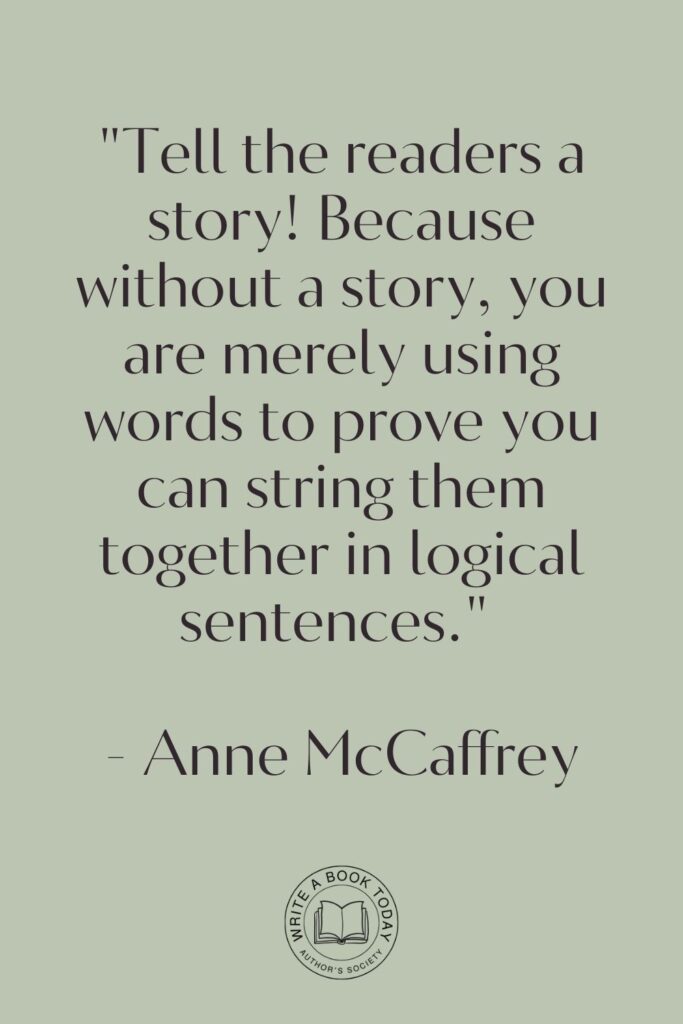Have you ever found yourself unable to put a book down, captivated not just by the plot, but by the vivid, relatable characters that seem to leap off the page?
What is it about these characters that draw us in so deeply, making them feel more like friends or foes than mere words on paper?
The magic lies in the art of character creation. Crafting characters that resonate with readers is akin to breathing life into them, making them dance across the pages and linger in our minds long after the story ends.
Let’s delve into the world of character creation and explore how you can create characters that not only engage but enchant your readers.
Understanding Character Creation
At the heart of every compelling story are characters that drive the narrative forward. Whether they are heroes, villains, or complex anti-heroes, their motivations and growth are what keep readers invested.
To master character creation, one must first understand the essential components that make characters memorable.

Defining Character Motivation
Motivation is the invisible thread that ties a character’s actions to their desires and fears. It is the “why” behind everything they do. Without clear motivations, characters can come across as flat or unbelievable.
Consider Harry Potter’s desire for belonging and family or Katniss Everdeen’s drive for survival and protection of her loved ones. These motivations are what make their stories compelling and their struggles relatable.
To ensure your characters’ motivations resonate with readers, align them with universal human desires such as love, acceptance, and security.
This connection will deepen readers’ empathy and investment in your characters’ journeys.
No marketing platform? No social following? No problem!
Publisher Rocket helps you market your debut novel like a pro.
It’s a gamechanger for debut authors – try it today!


The Importance of Character Arcs
A well-crafted character arc shows the transformation a character undergoes throughout a story. It’s a journey of growth, change, or sometimes, downfall.
A character arc can be positive, where the character grows and learns, or negative, where they succumb to their flaws.
For instance, Ebenezer Scrooge’s transformation from a miserly old man to a generous soul is a classic example of a positive character arc.
Types of Character Arcs
There are several types of character arcs, each serving different narrative purposes:
- Positive Change Arc: The character overcomes internal obstacles and grows into a better version of themselves.
- Negative Change Arc: The character spirals downward, often succumbing to their inner demons.
- Flat Arc: The character remains steadfast in their beliefs, influencing the world around them instead of changing themselves.
Understanding these arcs allows writers to craft nuanced and engaging characters that reflect the complexities of real-life human experiences.

Crafting Engaging Characters
Engaging characters are those who feel real to readers. They possess unique qualities and face challenges that highlight their strengths and weaknesses.
Here’s how you can create characters that captivate and hold your readers’ attention.
Creating Unique Character Profiles
Developing a detailed character profile helps in understanding your character’s personality, background, and motivations. Consider their likes, dislikes, quirks, and habits.
These details add layers to their personality, making them more relatable and realistic. Use tools like character questionnaires or personality tests to dig deeper into their psyche.
Utilizing Character Archetypes
Character archetypes are universally recognized models of behavior that help in shaping characters. From the Hero and the Mentor to the Trickster and the Shadow, archetypes provide a framework that can be adapted to fit your story’s needs.
However, avoid clichés by giving your archetypes unique twists that surprise and delight readers.
Blend multiple archetypes to create complex characters. For example, a character can be both a Mentor and a Trickster, providing guidance while also challenging the protagonist’s beliefs.
Balancing Strengths and Flaws
No one is perfect, and neither should your characters be. Flaws make characters relatable and human. They provide opportunities for growth and conflict within the story.
Balance your characters’ strengths with weaknesses to create depth and complexity. A hero with a fear of failure or a villain with a tragic past can evoke empathy and interest from readers.

Deepening Character Development
Character development is an ongoing process that evolves as the story progresses. It involves exploring the depths of your characters’ emotions, backgrounds, and relationships.
Exploring Backstory and Emotional Wounds
A character’s backstory shapes their present actions and decisions. Emotional wounds, or past traumas, influence how they react to challenges and interact with others.
Unraveling these layers can reveal motivations and fears that add depth to your characters. For instance, a character who experienced betrayal in the past might struggle with trust issues, impacting their relationships throughout the story.
Feeling lost with your debut novel?
Fiverr Pro connects you with expert editors, designers, and marketers – everything you need to get your book ready for success!

Building Motivations that Resonate
Motivations should be deeply rooted in a character’s core desires and fears. They drive the plot and give purpose to a character’s actions.
Align motivations with universal themes like love, revenge, or redemption to create a strong emotional connection with readers.
This alignment ensures that readers are invested in the character’s journey and the stakes feel real and urgent.
Establishing Goals and Conflicts
Goals give characters direction, while conflicts create obstacles that challenge their resolve. The interplay between goals and conflicts is what keeps the narrative dynamic and engaging.
As characters strive to achieve their goals, they encounter conflicts that test their limits and force them to grow. These elements are crucial in crafting a compelling and immersive story.

Bringing Characters to Life
Once you have established your characters’ foundations, it’s time to bring them to life on the page. This involves crafting dialogue, creating relatable experiences, and ensuring consistency in their actions.
Using Dialogue to Reveal Character
Dialogue is a powerful tool for showcasing a character’s personality, beliefs, and emotions. It should reflect their unique voice and perspective.
Through dialogue, readers gain insights into a character’s motivations and relationships. Pay attention to word choice, tone, and rhythm to ensure that each character’s voice is distinct and authentic.
Creating Relatable Experiences
Characters that face relatable challenges and emotions resonate with readers. These experiences can be as simple as dealing with a difficult boss or as complex as navigating a moral dilemma.
By placing characters in situations that reflect real-life struggles, you create a connection with readers who see their own lives mirrored in the story.
Maintaining Consistency in Character Actions
Consistency is key in character development. Ensure that a character’s actions align with their established traits and motivations. Inconsistencies can break the reader’s immersion and weaken the narrative.
However, allow room for growth and change as characters learn from their experiences and evolve over the course of the story.
Google Docs is for notes. Scrivener is for novels. Upgrade your writing game and try it for free today!

The Journey of Transformation
The journey of transformation is the essence of character arcs. It’s the path characters take from who they are at the beginning of the story to who they become by the end.
Navigating the Character Arc
A character arc is a roadmap of change, illustrating the internal journey a character undergoes. It involves moments of realization, conflict, and resolution that shape their transformation.
Whether it’s a hero overcoming their fears or a villain embracing their humanity, the arc provides a framework for meaningful character development.
Creating Pivotal Moments of Change
Pivotal moments are turning points in a character’s journey. These moments often involve critical decisions or revelations that alter their trajectory.
They challenge characters to confront their beliefs and fears, leading to growth or downfall.
Craft these moments with care, ensuring they are impactful and resonate with the character’s motivations and the story’s themes.

Connecting Character Arcs to Plot Development
The character arc and plot are intertwined, each influencing and driving the other. As characters evolve, their choices impact the plot’s direction and outcome.
Similarly, plot events shape character development, pushing them towards growth or conflict. This synergy creates a cohesive and engaging narrative that captivates readers from start to finish.
Align plot events with key moments in your character’s arc to create a seamless narrative flow. This alignment ensures that each event feels purposeful and contributes to the character’s journey.

Final Thoughts on Character Creation
Creating characters that leap off the page requires a blend of creativity, empathy, and attention to detail.
It’s about crafting individuals who feel real, with desires, flaws, and growth that mirror the complexities of human nature.
Reflecting on Your Own Writing Journey
As you embark on your character creation journey, take time to reflect on your own writing experiences. Consider the characters that have inspired you and the stories that have left a lasting impact.
Use these reflections to guide your creative process and inform the characters you bring to life.
Encouragement for Aspiring Writers
Remember, every great character begins with a single idea – a spark of inspiration that grows into a fully realized individual.
Don’t be afraid to experiment, take risks, and explore the depths of your characters’ personalities.
With dedication and creativity, you can craft characters that resonate with readers and make your stories unforgettable.








